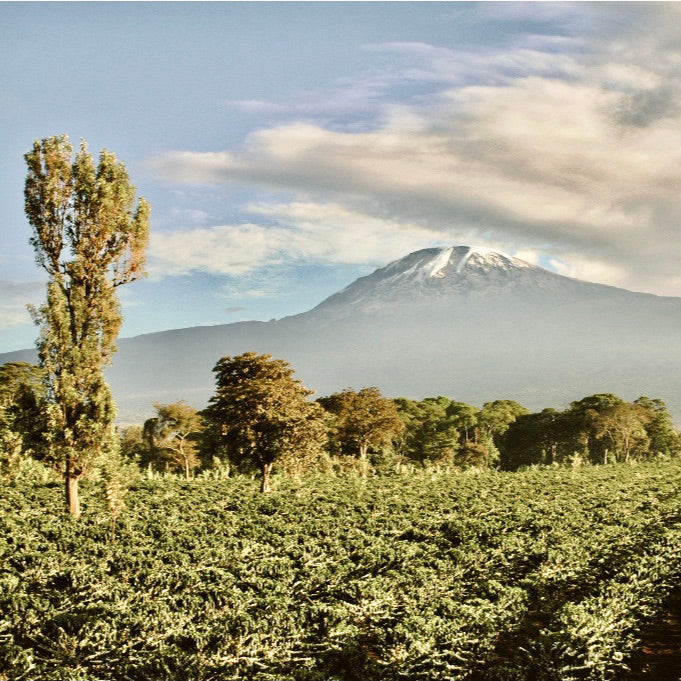
This coffee’s roasted in our espresso style — but that doesn’t mean you need to brew it as espresso. You can make it however you like — espresso, filter, moka pot, AeroPress or whatever you enjoy. We roast it a touch darker than we would a filter roast to caramelise the sugars and bring out smooth chocolatey and nutty flavours that cut beautifully through milk.
When you add milk the natural sweetness, fat and proteins tend to soften acidity and highlight caramelised flavours. That’s why lighter filter roasts can sometimes taste a bit sharp or sour with milk — they’re simply not built for it. Espresso roasts being more developed balance this out. The deeper caramelisation creates toffee and cocoa notes that blend harmoniously with milk’s creaminess while a hint of gentle bitterness adds that satisfying ‘coffee punch’ in your flat white or cappuccino.
If you prefer your coffee black this roast will still give you a full-bodied rich cup with plenty of depth and sweetness. For a lighter fruitier experience you might enjoy exploring our filter range instead.
Origin and Sourcing
?
?
?
Roast Details
?
?
?
?
?
?
?
?
Taste Profile
?
?
Tanzania | Kilimanjaro | Bourbon Washed - When is peak freshness?
Medium Roast - Roasted on Roest P3000
Other Information
Type: Arabica
Screen Size: 16 Up
About the producer
Kilimanjaro Plantation
Arabica Bourbon coffee, from the island of Reunion, which is still one of the favourite varietals at Mount Kilimanjaro, was introduced to the region by missionaries around 1890. Originally cultivated only on plantations, the coffee was soon adopted by the business-minded tribe of the Chagas and is still a main component of the "shamba" (cultivated garden) of every small holder farmer in the region.
Kilimanjaro Plantation has been growing and producing coffee since 1955 on the southern slopes of Mount Kilimanjaro in Moshi-Kibosho Mweka Tanzania. It was one of the first single-origin large scale coffee producers in Tanzania. The plantation has a total area of 663 hectares making it one the largest plantations in Northern Tanzania. They have planted and grown over 1 million coffee trees on 565 hectares of land, preserving the remaining land as natural forest.
The Plantation has planted more than 10,000 indigenous shade trees such as Cordia Africana (Mringamringa), Albizia Schimperiana (Mruka), and Croton Silvacus (Mfuru) across the plantation and in the community in order to help stabilize the microclimate and fight against deforestation in the region. These shade trees are also instrumental in cultivating coffee as they protect the soil and plants from the impact of the torrid East African sun.
The entire farm is equipped with a drip-line irrigation system, which provides constant water and nutrient uptake for every single coffee tree throughout the year. This ensures the coffee cherries can develop and ripen without disturbance. Drip-line irrigation reduces water consumption by 60%. The Plantation has its own team of Q Graders and a fully equipped cupping room in use daily for plantation staff and visitors.
-
About Bourbon
Tanzanian Bourbon is a prized variety grown primarily in the country’s highland regions, such as the Southern Highlands (Mbeya and Songwe) and the slopes of Mount Kilimanjaro and Mount Meru in the north. Derived from the Bourbon lineage introduced by missionaries in the late 19th century, Tanzanian Bourbon thrives at altitudes between 1,200–2,000 meters, where cooler temperatures and fertile volcanic soils create ideal growing conditions. This variety is known for its sweet, complex flavor profile, often featuring bright citrus acidity, red fruit notes like cherry or currant, and a clean, tea-like finish. It is commonly grown by smallholder farmers, whose careful hand-picking and washing methods help preserve the Bourbon’s delicate character.
While yields can be lower than hybrid varieties and plants are susceptible to disease, Bourbon is valued for its cup quality and is frequently used in specialty lots or microlot programs. In Tanzania, Bourbon is sometimes intercropped with bananas and shade trees, contributing to soil health and ecosystem balance. Producers and exporters have increasingly focused on traceability and quality improvements, bringing more attention to Tanzanian Bourbon as a high-quality offering that competes on the global stage. With support from cooperatives and quality-focused exporters, Tanzanian Bourbon continues to be a flagship variety showcasing the country’s specialty coffee potential.
Coffee in Tanzania
Coffee in Tanzania plays a significant role in the national economy and the livelihoods of over 400,000 smallholder farming families. Arabica coffee accounts for about 70% of the country's production, with the remainder being Robusta, mostly grown in the Kagera region near Lake Victoria. The main Arabica-growing regions are located in the north (Kilimanjaro, Arusha) and the south (Mbeya, Mbinga, Songwe), where altitudes, rainfall patterns, and soil composition contribute to excellent coffee-growing conditions. Tanzania's coffee harvest typically runs from July to December, with beans processed via washed, natural, and increasingly experimental methods.
Tanzanian coffees are well-regarded for their brightness and clarity, often compared to neighboring Kenya, but typically with a softer, rounder acidity. Washed coffees from the southern highlands are especially prized for their notes of stone fruit, black tea, and florals, while natural-processed lots can offer dense sweetness and tropical fruit flavors. The country uses an auction system (like Kenya) for much of its coffee trading, though direct trade and microlot programs are becoming more common. With increased focus on quality and traceability, Tanzania continues to grow in relevance within the specialty coffee market.
SKU: tanz_kil_1000g
Package Weight: 1050g
How does my coffee come packaged?
- Choosing a selection results in a full page refresh.
- Opens in a new window.

